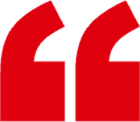In the world of glass fabrication, having the right tools can make all the difference. For small businesses and startup workshops, choosing the appropriate glass cutting equipment is crucial for enhancing efficiency, ensuring quality, and staying competitive. This comprehensive guide will explore the essential features of small-scale glass cutting tools, cost-effective options for startup workshops, and strategies for maximizing productivity through staff training.

Essential features of small-scale glass cutting tools
When it comes to selecting glass cutting equipment for your small business, several key features should be on your radar:
Precision and Accuracy
The cornerstone of any quality glass cutting tool is its ability to deliver precise, accurate cuts. Look for equipment that offers minimal cutting tolerances and consistent results. This precision is particularly crucial when working with intricate designs or custom-sized glass pieces.
Versatility
Small businesses often need to handle a variety of glass types and thicknesses. Opt for equipment that can accommodate different glass sizes and thicknesses, allowing you to take on a broader range of projects without investing in multiple machines.
Ease of Use
User-friendly interfaces and intuitive controls can significantly reduce the learning curve for new operators. This feature is especially beneficial for small teams where employees may need to multitask across different equipment.
Compact Design
Space is often at a premium in small workshops. Choose glass cutting equipment with a well-designed, compact footprint that maximizes your available workspace without compromising on functionality.
Durability and Low Maintenance
Robust construction and low maintenance requirements ensure your equipment remains operational with minimal downtime. This reliability is crucial for maintaining consistent production schedules and meeting customer deadlines.
Safety Features
Prioritize equipment with built-in safety mechanisms such as emergency stop buttons, protective guards, and dust extraction systems. These features not only protect your employees but also comply with industry safety standards.

Cost-effective options for startup glass workshops
For startups and small businesses, balancing quality with budget constraints is a common challenge. Here are some cost-effective options to consider:
Manual Glass Cutters
While not as fast as automated systems, manual glass cutters offer an affordable entry point for small workshops. They're ideal for businesses with lower production volumes or those specializing in custom, small-batch projects.
Semi-Automatic Cutting Tables
These machines offer a middle ground between manual cutters and fully automated systems. They provide increased efficiency and precision over manual tools while being more budget-friendly than their fully automated counterparts.
Refurbished Equipment
Consider purchasing refurbished glass cutting equipment from reputable suppliers. These machines can offer significant cost savings while still providing reliable performance.
Leasing Options
Leasing high-end equipment can be a viable option for startups looking to access advanced technology without the hefty upfront investment. This approach also allows you to upgrade as your business grows.
Modular Systems
Some manufacturers offer modular glass cutting systems that allow you to start with basic functionality and add features as your business expands. This scalability can be a cost-effective way to grow your capabilities over time.
Maximizing productivity: Training staff on new equipment
Investing in the right glass cutting equipment is only half the battle. To truly enhance your workshop's efficiency, it's crucial to ensure your staff is well-trained and comfortable with the new technology.
Comprehensive Initial Training
Start with a thorough training program that covers all aspects of the equipment, from basic operation to advanced features. This initial investment in training can significantly reduce errors and improve overall productivity.
Hands-On Practice Sessions
Provide ample opportunities for staff to practice using the new equipment in a low-pressure environment. This hands-on experience builds confidence and proficiency.
Create Standard Operating Procedures (SOPs)
Develop clear, step-by-step SOPs for each piece of equipment. These documents serve as valuable references and ensure consistency in operation across different shifts or operators.
Regular Skill Assessments
Implement periodic skill checks to identify areas where additional training may be needed. This proactive approach helps maintain high standards of quality and efficiency.

Cross-Training
Encourage cross-training among your staff. Having multiple employees proficient in operating various pieces of equipment increases flexibility and reduces bottlenecks in your production process.
Continuous Learning
Stay informed about software updates or new features for your equipment. Regularly update your training programs to incorporate these advancements, ensuring your team is always working with the latest tools and techniques.
Feedback Loop
Establish a system for operators to provide feedback on the equipment and suggest improvements. This not only helps identify potential issues early but also fosters a culture of continuous improvement in your workshop.
Safety Training
Incorporate comprehensive safety training specific to each piece of equipment. This not only protects your employees but also ensures compliance with industry regulations.
Mentorship Programs
Pair experienced operators with newer staff members. This mentorship approach facilitates knowledge transfer and helps build a supportive team environment.
Performance Incentives
Consider implementing performance-based incentives tied to proficiency with the new equipment. This can motivate staff to quickly master new skills and continuously improve their performance.
Collaborative Problem-Solving
Encourage team members to work together in solving challenges related to the new equipment. This collaborative approach can lead to innovative solutions and improved processes.
Documentation and Knowledge Sharing
Create a centralized knowledge base where staff can share tips, tricks, and solutions related to the equipment. This resource becomes invaluable as your team grows and evolves.
Regular Equipment Maintenance Training
Include basic maintenance procedures in your training programs. This knowledge helps operators identify potential issues early and perform routine maintenance, reducing downtime and extending equipment lifespan.
Simulated Production Runs
Organize simulated production runs that mimic real-world scenarios. This practice helps staff become comfortable with the equipment under various conditions and prepares them for actual production challenges.
Customized Training Plans
Recognize that each employee may have different learning styles and paces. Develop flexible training plans that can be tailored to individual needs, ensuring everyone can achieve proficiency with the new equipment.
Technology Integration Training
If your new glass cutting equipment integrates with other systems (e.g., design software or inventory management), ensure your training covers these integrations. This holistic approach improves overall workflow efficiency.
Quality Control Training
Incorporate quality control procedures specific to the new equipment into your training programs. This ensures that operators can not only use the equipment effectively but also maintain high quality standards in their output.
Emergency Response Training
Prepare your team to handle potential emergencies or malfunctions with the new equipment. This training should cover shutdown procedures, troubleshooting basics, and when to call for professional maintenance.
By focusing on these key areas - selecting the right equipment, considering cost-effective options, and investing in comprehensive staff training - small businesses can significantly enhance their glass cutting operations. The right combination of quality equipment and well-trained staff can lead to improved efficiency, reduced waste, and ultimately, a more competitive position in the market.
Remember, the journey to optimizing your glass cutting workshop is ongoing. Stay informed about industry trends, continue to invest in your team's skills, and be open to new technologies that could further enhance your operations. With the right approach, even small glass cutting businesses can achieve remarkable efficiency and quality in their work.

Conclusion
Investing in the right glass cutting equipment manufacturer and properly training your staff can transform your small business's efficiency and output quality. By carefully considering the essential features of small-scale tools, exploring cost-effective options, and implementing comprehensive training programs, you can position your workshop for success in the competitive glass fabrication industry.
Are you ready to take your glass cutting operations to the next level? At Shandong Huashil Automation Technology Co., LTD, we specialize in providing high-quality, automated glass cutting solutions tailored to the needs of small businesses and startups. Our years of experience in production and export, combined with our advanced techniques and commitment to quality, make us the ideal partner for enhancing your workshop's efficiency. Don't let outdated equipment hold you back - contact us today to explore how our innovative glass cutting solutions can propel your business forward.
FAQ
1. What are the key factors to consider when choosing glass cutting equipment for a small business?
Key factors include precision, versatility, ease of use, compact design, durability, and safety features. It's important to balance these features with your specific business needs and budget constraints.
2. How can small glass workshops maximize their investment in new cutting equipment?
Maximizing investment involves selecting cost-effective options like semi-automatic cutting tables or refurbished equipment, implementing comprehensive staff training programs, and focusing on continuous improvement and skill development.
3. What are some budget-friendly options for startup glass cutting workshops?
Budget-friendly options include manual glass cutters, semi-automatic cutting tables, refurbished equipment, leasing arrangements, and modular systems that allow for gradual expansion of capabilities.
4. How important is staff training when introducing new glass cutting equipment?
Staff training is crucial for maximizing productivity and ensuring safe, efficient operation of new equipment. Comprehensive training programs, including hands-on practice, SOPs, and continuous learning opportunities, are essential for success.
Quality Glass Cutting Equipment for Small Businesses | HUASHIL
Looking to enhance your glass cutting operations? Shandong Huashil Automation Technology Co., LTD offers state-of-the-art glass cutting equipment designed specifically for small businesses and startups. Our range of products combines precision, efficiency, and affordability, helping you streamline your operations and boost productivity. With our advanced technology and commitment to quality, we're dedicated to helping your business thrive in the competitive glass fabrication industry. Ready to take the next step? Contact us at salescathy@sdhuashil.com to discuss how our cutting-edge solutions can transform your workshop today!
References
1. Smith, J. (2023). "Advancements in Glass Cutting Technology for Small Workshops". Journal of Glass Manufacturing, 45(2), 78-92.
2. Johnson, A. & Brown, T. (2022). "Optimizing Efficiency in Small-Scale Glass Fabrication". International Glass Review, 18(4), 112-125.
3. Garcia, M. (2023). "Training Strategies for New Equipment Adoption in Glass Workshops". Glass Industry Training Quarterly, 7(3), 45-58.
4. Lee, S. et al. (2022). "Cost-Effective Solutions for Startup Glass Cutting Operations". Small Business Glass Technology, 29(1), 33-47.



